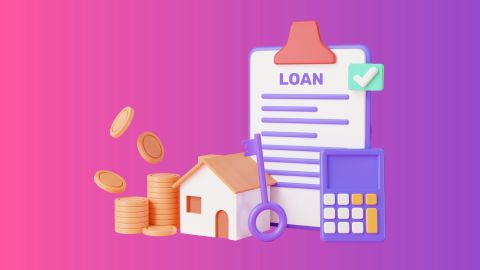A conveyance deed is an essential legal document that transfers property ownership from one entity to another. In the context of a housing society, the conveyance deed from the builder (or developer) to the society is a crucial step in securing the rights and interests of the society’s members. This document serves as a cornerstone for the legal and operational stability of the housing society, and its importance cannot be overstated.
The execution of a conveyance deed also significantly impacts the home loan process for individual apartment owners within the society. Financial institutions require clear and marketable titles to the property before approving home loans. A registered conveyance deed assures lenders that the society and its common areas are legally owned by the residents, reducing the risk associated with lending. This clarity enhances the likelihood of loan approval and often allows for better loan terms, as the property is seen as a more secure investment.
What is a conveyance deed from the builder to society?
In the realm of real estate, the conveyance deed stands as a vital legal instrument, facilitating the transfer of ownership rights from a builder to a housing society. This legal document marks the culmination of the builder-buyer relationship, ensuring that society gains rightful ownership of the property. Understanding its nuances and importance is crucial for all parties involved.
Key elements of a conveyance deed from the builder to society
A conveyance deed from the builder to the society is a critical document that ensures the legal transfer of ownership and clearly outlines the terms and conditions associated with this transfer. Here are the key elements typically included in such a conveyance deed:
1. Title and introduction:
The document begins with a title and an introductory section that identifies it as a conveyance deed. It includes the date of execution and the names of the parties involved (the builder and the housing society).
2. Parties to the deed:
Detailed information about the parties involved, including the builder (or developer) and the housing society. This section provides the names, addresses, and legal identification details of both parties.
3. Recitals:
Background information and statements that explain the purpose of the deed. This section often includes the history of the property, the development process, and the intent to transfer ownership from the builder to the society.
4. Property description:
A detailed description of the property being transferred. This includes the geographical location, boundaries, total area, layout plans, and specifics of the common areas and amenities being conveyed to the society.
5. Consideration:
The financial aspects of the transfer, including the consideration amount (if any) paid by the society to the builder for the transfer of ownership. This section may also detail any outstanding payments or obligations.
6. Transfer of rights:
The deed explicitly states the transfer of all rights, titles, and interests in the property from the builder to the society. This includes the common areas, facilities, and any other shared resources.
7. Covenants and conditions:
This section outlines the covenants, terms, and conditions agreed upon by both parties. It may include conditions related to the maintenance of the property, usage of common areas, and responsibilities of the society and its members.
8. Representations and warranties:
The builder's representations and warranties regarding the property, such as the assurance that the property is free from encumbrances, liens, or legal disputes. It also includes guarantees about the completion and quality of construction.
9. Indemnity clause:
A clause where the builder indemnifies the society against any legal claims, disputes, or defects in the title that may arise after the transfer of ownership.
10. Execution and registration:
Details about the execution of the deed, including the signatures of authorized representatives from both the builder and the society. It also outlines the process for registering the deed with the appropriate government authorities to make it legally binding.
11. Schedules and annexures:
Additional documents attached to the deed, such as layout plans, maps, approvals from regulatory bodies, and any other relevant documentation that supports the transfer and provides clarity on the property details.
12. Witnesses:
The section where witnesses sign the deed, providing additional validation to the transfer process. Witnesses are typically required to attest to the authenticity of the signatures.
Including these elements ensures that the conveyance deed is comprehensive and legally sound, providing clear terms of the transfer and protecting the rights of both the builder and the society.
The importance of obtaining a conveyance deed
Obtaining a conveyance deed is not merely a procedural formality but a fundamental step in securing the interests of society. Without this document society may face uncertainties regarding property ownership, hindering its ability to undertake maintenance, renovations, or any other developmental activities. Moreover, a lack of clarity regarding ownership can impede society's efforts to avail loans or engage in legal transactions.
Process of obtaining conveyance deed from the builder
The process of acquiring a conveyance deed involves various stages, including formal requests, documentation, verification, and registration. It requires coordination between the builder, society members, legal experts, and government authorities. While the process may seem arduous, its completion ensures society's legal standing and autonomy over the property.
Benefits of having a conveyance deed for society
The possession of a conveyance deed bestows numerous benefits upon society. Firstly, it grants legal recognition and protection, shielding society from potential disputes or encroachments on its property rights. Additionally, it enhances the marketability of the units within society, instilling confidence in prospective buyers and investors. Moreover, with ownership firmly established, society gains autonomy to manage its affairs independently, fostering a sense of community and responsibility among its members.
Important Links: What is Home Loan | Home Loan Eligibility Criteria | Documents Required for Home Loan | Home Loan Balance Transfer | Joint Home Loan | Home Loan Tax Benefits | Home Loan Subsidy
Explore Bajaj Finserv Home Loan
In the process of acquiring properties within housing societies, home loans play a crucial role in bridging the financial gap for prospective buyers. Bajaj Housing Finance Home Loans are designed to meet a variety of needs, ensuring both accessibility and affordability. Here are some benefits of opting for a home loan from Bajaj Housing Finance:
- Benefit from competitive home loan interest rates starting at 7.99%* p.a., ensuring affordability and ease of management.
- Unlock additional funding through our top-up loan facility, allowing you to secure Rs. 1 crore* or higher, for renovations, repairs, or expansions. Enjoy minimal documentation requirements and attractive interest rates.
- Experience convenience with flexible repayment options, including extended tenures of up to 32 years. Choose a repayment plan that suits your financial situation, enabling you to manage your loan efficiently.
- Tailor your home loan to your specific needs with our customisable options. Personalise your loan amount and repayment tenure, empowering you to achieve homeownership on your terms.
Visit the Bajaj Finserv website to apply for a home loan today.




